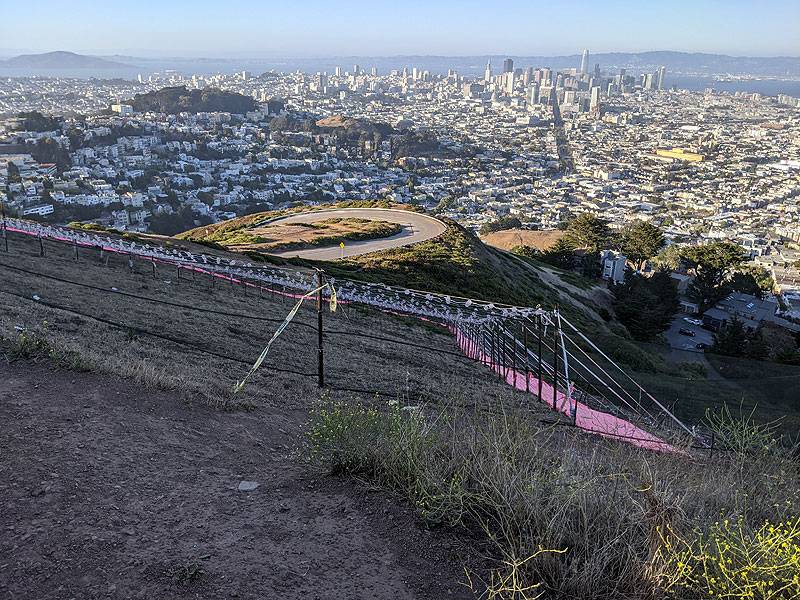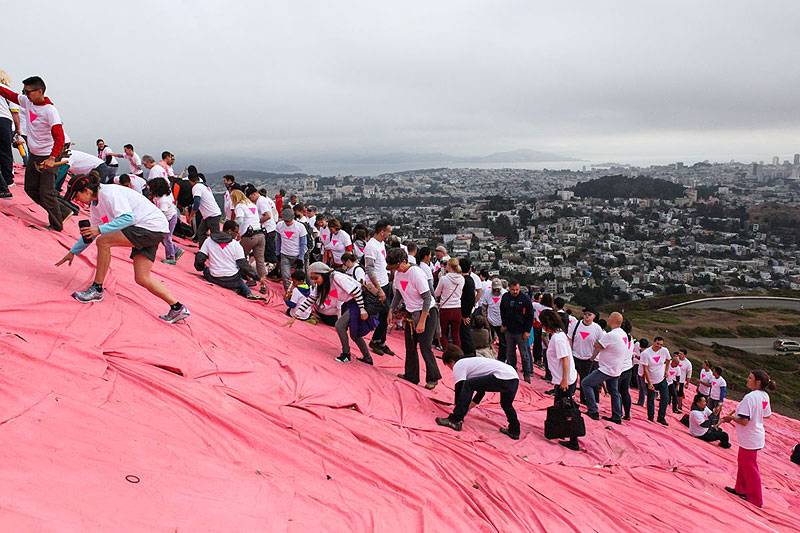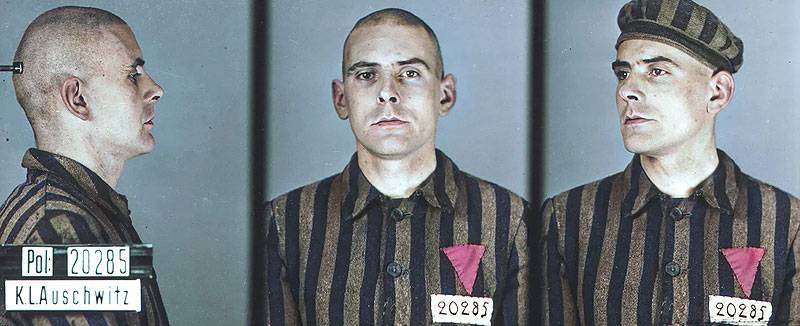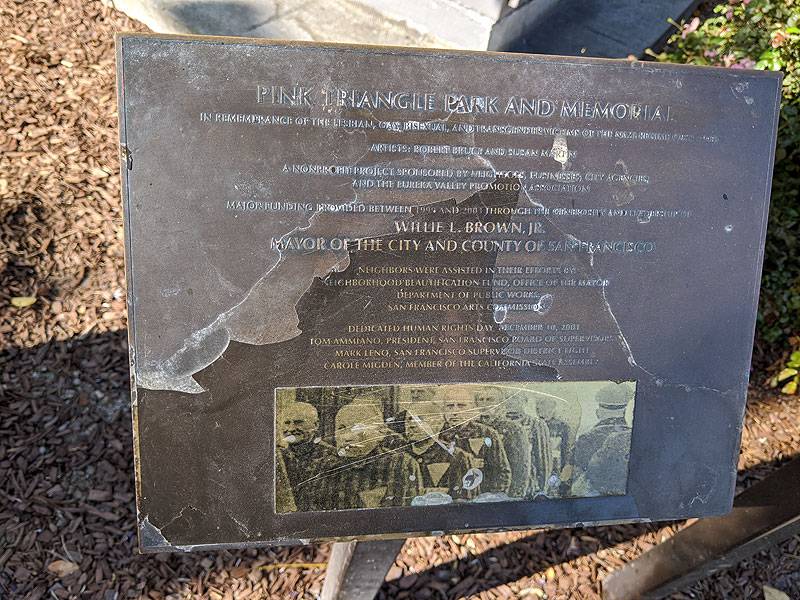Pink Triangle Reclaimed
Historical Essay
by Friends of the Pink Triangle
The LED pink triangle, celebrating Gay Freedom, on Twin Peaks in 2020.
Photo: Chris Carlsson
The rigging up close from the Twin Peaks observation area.
Photo: Chris Carlsson
How the installation of hundreds of pink plastic triangles was done pre-pandemic.
Photo: courtesy 48hills.com
The pink triangle was used by the Nazis in concentration camps to identify and shame homosexuals. This symbol, used in an attempt to label and shame, has been embraced by the gay community as a symbol of pride.
However, in the 1930s and 40s, there was nothing to celebrate concerning the pink triangle. Gays were forced to wear the pink triangle on their pockets in the concentration camps to identify them as homosexual to set them apart from other prisoners.
Triangles of various colors were used to identify each category of “undesirable”: yellow for Jews, brown for Gypsies, red for political prisoners, green for criminals, black for anti-socials, purple for Jehovah’s Witnesses, blue for immigrants, and pink for homosexuals.
The pink triangles were slightly larger than the other colored triangles so that guards could identify them from a distance. It is said that those who wore the pink triangles were singled out by the guards to receive the harshest treatment, and when the guards were finished with them, some of the other inmates would harm them as well.
Gay prisoner at Auschwitz.
More prisoners of the Nazi regime.
At the end of the war when the concentration camps were finally liberated, virtually all of the prisoners were released except those who worse the pink triangle. Many of those with a pink triangle on their pocket were put back in prison and the nightmare continued.
It is the same kind of senseless, irrational hatred that still haunts Gays, Jews, Blacks, and other minorities today.
That is why the Twin Peaks Pink Triangle display is so important. We must remind people of the hatred and prejudice of the past to help educate others and prevent it from happening again. What happened in the Holocaust must not be forgotten and must not be repeated.
The pink decorative rocks arranged in a triangle at Pink Triangle Park, just west of the iconic intersection of Market and Castro.
Photo: Chris Carlsson
These granite triangular posts are arranged in a larger triangle too.
Photo: Chris Carlsson
Path leading to Pink Triangle Park.
Photo: Chris Carlsson
Photos: Chris Carlsson










